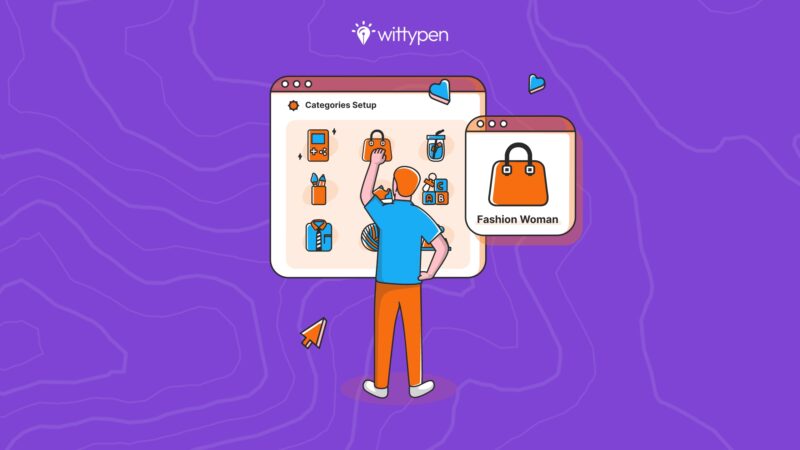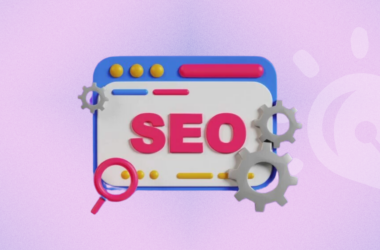Last updated on December 4th, 2023
Did you know? Over 8.7 billion queries ricochet through Google’s neural networks daily.
By 2024, content marketing could swell up to an astonishing $600 billion industry.
This shows us the importance of a solid ecommerce content marketing strategy for your brand in this digital-first world. Having said that, we know that it might feel like trying to scale Everest.
But hey! With a tried-and-true blueprint, it’s a feasible climb.
It’s not just about survival but also about giving your audience an invigorating, dynamic digital experience—think refreshing content, trend-forward aesthetics, and unwavering consistency.
Ecommerce content marketing could be your secret weapon to outshine the competition by building brand loyalty and pushing the needle on sales.
Now, let’s delve into 16 game-changing strategies to transform your content marketing for ecommerce.
What is Ecommerce Content Marketing?
Ecommerce content marketing is a part of the inbound digital marketing strategy that centres on attracting your prospective customers.
This is achieved by presenting them with top-quality content, whether they’re scouring search engines, scrolling through social media, or browsing product review sites for answers.
A good e-commerce content marketing strategy increases customer loyalty and organic traffic and enhances conversions and retention rates. After all, there’s a reason why 82% of marketers swear by it today!
16 Content Marketing Strategies For Ecommerce That Convert
1. Optimise For Search Engines
Did you know that nearly 51% of shoppers turn to Google when researching a potential purchase? It’s because they’re hunting for the best, and your ecommerce site needs to show up at the right place and time.
Now, many brands chase unrealistic ranking dreams, like gunning for the “best [product]” keywords, without integrating them naturally.
But here’s a smarter play – the trick lies in pinpointing relevant keywords and including them seamlessly into your product titles, descriptions, and meta tags.
And don’t forget, AI-powered tools like ChatGPT can supercharge your visibility, helping you pick and position keywords that get clicks. For starters, you can ask ChatGPT to give you a list of keywords related to your business or the target audience. Like this:
Objective: keyword research
Prompt: “create list of keywords for articles where we focus on writing about content marketing, content writing, and SEO. The keywords should focus on listicle format articles around case studies, tools, templates, and examples. Cluster these keywords as per the focus areas and pitch 10 keywords in each Focus areas. Also, the target audience here is senior marketers, CMOs, SEO Heads, in the US and we plan to focus on Middle of the funnel content. Put this in tabular format.”

2. Focus on User-Generated Content
It’s no secret that there’s no better promotion than your customers serving as your marketing squad. But how do you make this happen?
Enter User-Generated Content (UGC); your eCommerce brand’s secret to authenticity.
Here’s a question. Do you check the reviews before clicking on the ‘Add to Cart’ button? If yes, you are among the 70% of online buyers who read anywhere between 1-6 customer reviews before considering a purchase. Clearly, the power of word-of-mouth marketing is potent.
Similarly, social media posts, where customers are reviewing your products, can act as great sources of trust and credibility. From customer reviews to social media posts, UGC is the gateway to building a vibrant community around your brand.
Take a cue from MVMT watches. Their journey from the bottom to $90 million in only half a decade is a testament to the magic of UGC.
They now boast 1.5 million loyalists and 5 million social media followers. If this doesn’t display the power of people promoting your brand, we don’t know what will.
3. Elevate Your Website’s Look and Feel (UI/UX)
Think of your ecommerce site as a digital storefront. Now, would you rather walk into a jumbled, confusing shop or one that’s sleek, organised, and welcoming? The latter, of course. That’s why nailing your site’s UI/UX is crucial.
With Google’s page experience update, it’s not just about aesthetics but also functionality—easy navigation, swift load times, attractive layouts, and comprehensive product details.
A well-optimised site curbs frustration, sparks curiosity and reinforces your brand image. Plus, with help from tools like ChatGPT, you can generate alluring copies and offer personalised product suggestions to your users. Check this out:
Objective: Landing page copywriting
Prompt: “Imagine yourself as an experienced copywriter as we are building a landing page that will explain the content writing process at Wittypen. Generate 5 copies for the landing page hero section, which consists of 4-5 words of page title and hero description around 60-80 characters. The tone should be professional and witty.”
However, keep in mind that while AI is a game-changer, the human touch is irreplaceable. For a piece of content to remain authentic and resonate with your audience, use AI tools judiciously.
4. Don’t Miss Out on the Moment: Make it Mobile-Friendly
Let’s drop some numbers—did you know in the past six months, a whopping 79% of smartphone users made a purchase online via their mobile devices?
That’s why ensuring your site is mobile-friendly is necessary. If your customer is not able to navigate your website easily, they will leave; it is as simple as that. So, adopt a responsive design that smoothly adjusts to various screen sizes, is easy to navigate, and has a speedy checkout process.
It’s all about enhancing user experience, which in turn fuels conversion rates and customer satisfaction.
You can also use AI tools up to a certain extent. While it can’t directly impact the technical aspects of mobile-friendliness (like the responsive design or load times), it can contribute significantly to the overall user experience on mobile devices.
The possibilities are endless, but here are two ways to help you get started:
- ChatGPT can generate concise and mobile-optimized content and keep the visual length in check.
- You can integrate GPT into chatbots for real-time customer interaction, answering queries, offering product recommendations, and providing personalised assistance.
5. Retargeting Ads: Second Chance to Make a First Impression
Recapture the attention of users who’ve interacted with your ecommerce store before. Think of these ads as friendly nudges, subtly reminding potential customers about your brand and piquing their interest to click ‘buy now’.
You can distribute and customise ads across various platforms ads. It’s not just about keeping your brand in sight but also to leave a strong impression.
6. Create Narratives that Connect: Adapt Storytelling
Storytelling is a potent tool to involve the audience in your brand’s journey, sparking an emotional bond. Sharing your business’s mission, values, or behind the scenes of your operations through interesting narratives helps your audience see the heart behind the brand, making it more human and more relatable.
Storytelling in the business world looks a bit different. Each content piece, like a blog or a social media post, is a chance to tell your brand story. But often, you know the story but don’t know how to convey it to your audience.
Let’s say you want a blog that gives a closer insight into your eco-friendly manufacturing process. But you don’t know what structure to follow, what keywords to use, or what points to cover.
7. Influencer Partnerships: Harness the Power of Popularity
Whether they’re doling out style advice or giving your products the ‘real-life’ test, influencers can magnify your brand’s visibility, increasing conversions. When your audience sees real people using your product or service, it makes your brand more authentic and alluring. Naturally, your e-commerce business witnesses a higher sales rate as a result.
A great example of a brand using this strategy effectively is ASOS. The online fashion retailer launched an influencer marketing campaign where it dubbed its influencers ‘ASOS Insiders.’
These Insiders didn’t just promote the products; they provided value to the audience by offering fashion tips and style advice in context with ASOS products.
Having a creative block for campaign ideas? ChatGPT can be your instant rescuer!
Have a look at this:
Objective: Generating campaign ideas
Prompt: “Act as a marketing lead who has years of experience in creating campaign ideas for the product launch. We are launching two tools content brief generator and a content calendar generator, these tools are created to make the content creation process smooth; they work because
1. These AI tools give you on-brand responses which understand the context.
2. You can edit and add your insights to make it unique
3. Download as a document and share it with your execution team
Give me campaign ideas for promoting my tools with a proper execution plan that can convince users to use our tools.”
8. DIY Your Way to Engagement
Offer your audience step-by-step DIYs (Do It Yourself) coupled with visually striking examples to empower them to explore and channel their creative flair. This way, you can not only attract your audience but also beautifully showcase the versatility of your products.
Take Starbucks’ #SketchTheBlend campaign during Diwali’20, for example. This DIY campaign encouraged participants to get creative and offered complimentary beverages for outstanding entries.
The campaign was highly successful and resulted in increased customer engagement with the brand and sales.
9. Empower with Knowledge: Education as a Marketing Strategy
Cement your brand as a reliable authority by drafting knowledgeable materials that help customers make informed purchases. At the same time, this also displays your commitment to providing value for your customers’ money.
The best example for this would be creating educational blogs that provide deeper insights about your product or service and related topics. Have a look at Shopify’s blog page for inspiration.
However, thinking of topics for content pieces can be a task at times. It requires a lot of market research and knowledge of SEO and demands a considerable amount of creativity. Having to do this on a regular basis is taxing and takes away time from other business matters that cannot be done without your attention.
We present to you our Content Calendar Generator, which utilises the power of AI and gives you a plan of action for your content strategy.
Just sign up, and you’re one click away from your personalised content calendar.
10. Fascinate Your Audience with Fun Campaigns and Contests
Keep your audience interested in your brand with contests and in-game rewards from time to time. From frequent sales and exclusive discounts to joint ventures with other companies offering rewards, many fun and interactive initiatives can create excitement among your customers.
Excitement grabs the attention, creates engagement, and, thus, drives sales.
Take a cue from Canva’s #CanvaDesignChallenge, a weekly contest that invites users to exhibit their most unique, original designs, with winners reaping enticing rewards such as a year’s paid membership to Canva.
Source : Google
11. Amplify Your Brand Through PR and Events
PR and events can accelerate your ecommerce content marketing’s visibility and reputation. Strategic PR tactics, such as generating positive buzz, building media relationships, and partnering up with influencers for promotion, can augment your brand’s presence.
You can pair this with attention-grabbing events, live or virtual, to develop connections with your audience.
Take a leaf out of Adobe’s book, which in 2023 brilliantly collaborated with the Sundance Film Festival. They showcased their video editing solutions through an appealing series of interviews and behind-the-scenes content starring actors, filmmakers, and festival attendees.
You can also use ChatGPT to draft press releases, create striking event invitations, and capture your audience in real time, ensuring that your brand continues to shine in the limelight.
12. Share Tips for Maintaining the Product
Giving your customers valuable tips on product maintenance not only boosts their user experience but also manifests your expertise. When you deliver smart tips and insights, it promotes customer trust and enriches their buying journey.
Giving customers the knowledge and tools they require to maximise a product’s benefits enhances your standing as a trustworthy ecommerce provider.
13. Connecting Products to Real-world Solutions
Whether you’re creating content or demo videos, highlight your product’s versatility and value in diverse contexts. It’s all about helping customers visualise your solutions in action and understanding the real benefits.
This ecommerce content marketing approach unveils an in-depth comprehension of your value proposition and empowers customers to make informed buying decisions.
14. Stir Curiosity and Interest with Interactive Quizzes
Quizzes not only create curiosity among your audience but also act as informative treasure chests. You can gain valuable insights into your audience’s preferences and demands. You can also give them a more personalised experience.
Check out Uoma’s 30-Second Shade Match Quiz to get some inspiration.

And guess what? If you’re crunched for time, ChatGPT can be your personalised gateway to quiz ideas that hit the mark every time. Here’s an example:
Objective: Quiz ideas
Prompt: “Suggest some quiz ideas to promote our upcoming webinar, which is on the topic “Deep dive into genAI for marketers” The aim of posting quizzes is to build more engagement for the webinar. All the quiz suggestions should help us in promoting the webinar.”
15. Utilise the Power of Email Marketing
Customising your emails to resonate with each recipient makes your brand’s message more impactful. If you’re not using the power of email marketing, then you are missing out because email is the channel for generating the highest ROI.
Pro-tip: You can use AI tools like ChatGPT to generate quick and well-written email copies.
Here’s a simple prompt for the same:
Objective: generate emails
Prompt: “Write an email to reach out to the marketing leads to try our content tools which are content brief generator and content calendar generator. These tools are unique from the rest of the tools in the market because they give you on-brand responses, and the results are easily downloadable. The email should start with a question to build curiosity for the readers and then appeal to them to check out our tools with a CTA. The email should be short and deliver to the point message. Write the email in about 80-100 words.”
16. Product Guides To Enlighten Your Customers
You wouldn’t give someone a puzzle without the picture on the box, right? That’s why it is essential to create detailed product guides for your customers. This sheds light on every feature, benefit, and use-case scenario of your products.
Each product guide is also an opportunity to affirm your role as a subject matter expert and a reliable source of information.
Remember, with AI tools like ChatGPT, creating an outline for these comprehensive guides becomes a breeze.
Here’s an example of the same:
Objective: generate outlines
Prompt: “I’m writing a blog on the topic “The Impact of AI on the Marketers” Create a detailed outline consisting of some interesting subheadings which will help a reader to understand the role of AI in marketing. With this blog, I’m targeting all marketers, SEO experts, and anyone who wants to learn about the implementation of AI in marketing. The outline should not exceed the word count of 2000 words. Also, mention the focused keyword and suggested keywords in the beginning of the outline that should be included in the blog for it to rank on search engine result pages.”
Begin Your Journey to Effective Ecommerce Content Marketing
A good ecommerce content marketing strategy is the backbone of your online presence and a powerful tool for building a loyal audience base.
Remember that success in ecommerce content marketing strategy always boils down to connecting with people. And as you embark on this journey, you’re not alone. AI tools like ChatGPT are available at your convenience – a good command away from making your content creation more powerful.
So, ready to ride the wave of effective ecommerce content marketing? The journey to the top starts now!
FAQs
1. Which content marketing strategies are most effective for commerce?
The best ecommerce content marketing strategies are those that resonate with your audience. A mix of search engine optimization, utilizing user-generated content, enhancing mobile-friendliness, retargeting ads, storytelling, influencer collaborations, and inspiring DIY projects tend to hit the mark. However, the ‘best’ is subjective and depends on your brand, target audience, and industry.
2. How can I produce interesting material for my ecommerce website?
To amp up your content game, start by providing genuine value. Whether it’s through enlightening blogs, problem-solving guides, AI-powered content using tools like ChatGPT, high-resolution images, immersive videos, or personalized experiences, it’s all about meeting your audience where they are.
3. What are some examples of successful ecommerce content marketing campaigns?
Ecommerce content marketing hits are everywhere. Take ASOS’s ‘ASOS Insiders’ influencer campaign, gaming companies showering players with rewards, or education-led content campaigns that enlighten and engage. Each offers a unique blend of ingenuity, strategy, and user focus.
4. What are the key elements of a successful ecommerce content marketing strategy?
A rock-solid ecommerce content marketing strategy isn’t a puzzle. It’s about knowing your audience, nailing keyword research, producing top-tier content, experimenting with formats, promoting across platforms, and continually tweaking your strategy based on data.
5. What role does SEO play in ecommerce content marketing?
SEO is your secret sauce in ecommerce content marketing. It gets your website on the radar, pulls in organic traffic, and broadens your reach. By aligning your content with relevant keywords, enticing meta descriptions, and trusty backlinks, you make it easy for your ecommerce site to be found, loved, and shopped from.









